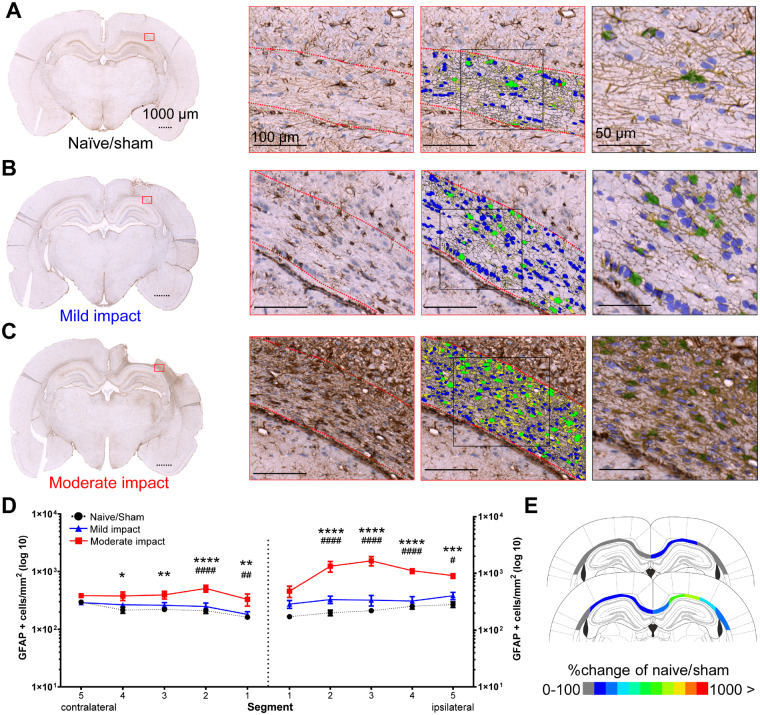Figure 7.
Moderate impact causes a significant astrocytic response in the corpus callosum. GFAP+ cells in the corpus callosum (dotted outline) of naive/sham animals (A) and following mild (B) and moderate (C) impact. Representative whole brain photomicrographs (left), with a coloured rectangle showing the magnified area (middle left). Middle: Colour-coded overlay of detected GFAP+ cells (green) with processes (yellow) and haematoxylin+ cells not classified as astrocytes (blue). Right: A magnified view with transparent overlay. Dotted scale bars = 1000 μm, solid lines = 100/50 μm. (D) HALO quantification of GFAP+ cells in five segments of the ipsilateral corpus callosum and one contralateral segment. (E) Colour-coded heat map, showing per cent changes of GFAP+ cells (rounded, compared to naïve/sham animals) in the individual segments of the corpus callosum after mild (top) and moderate impact (bottom). All data are presented mean ± SEM. Naive/sham: n = 7; 1 mm impact: n = 6, 2 mm impact: n = 6. *P < 0.05, **P < 0.01, ***P < 0.001 and ****P < 0.0001 significance difference of moderate impact versus naive/sham animals. #P < 0.05, ##P < 0.01, ###P < 0.001 and ####P < 0.0001) significant difference of moderate versus mild impact.

